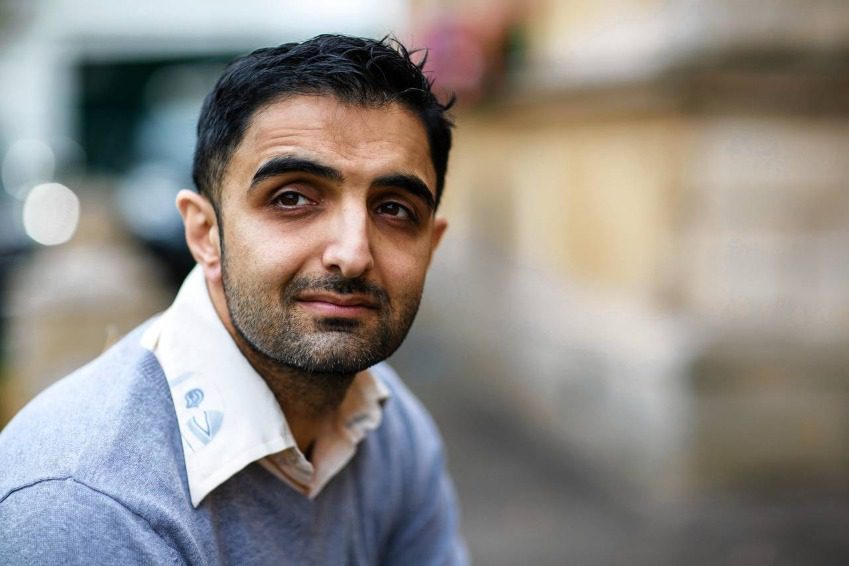(August 2, 2021; 6.45pm) Once upon a time there was a girl who’d been chosen for the prestigious Watson Fellowship which took her around the world – South Africa, Trinidad and Tobago, and Malaysia – to write short stories. Halfway through the trip though, Madhuri Vijay gave up on her PhD plan. She had been writing every single day, but was quite unimpressed by her short stories. Interestingly years later, one of those stories evolved to become Vijay’s debut novel The Far Field, winner of the 2019 JCB Prize for Literature, one of India’s highest literary awards. The book was also shortlisted for the DSC Prize for South Asian Literature.
Set between the hustle and bustle of Bangalore and the starkness of the Kashmir Valley, the book explores the fractured relationship of a mother and daughter, the pain of unrequited love, and the need to leave behind one life only to unwittingly leave dangerous repercussions on another. Restless and unsure, Shalini, the protagonist in the book, is the quintessential outsider. Shalini’s desperate need to belong and simply fit in is real and Vijay manages to bring alive each emotion with characters that are carefully fleshed out and situations that are as insightful as they are heart rending.
The winner of the 2019 JCB Prize for Literature is ’The Far Field’ by Madhuri Vijay.#JCBPrizeWinner #TheJCBPrize2019 #MadhuriVijay @HarperCollinsIN pic.twitter.com/2vqq8nbZTj
— The JCB Prize for Literature (@TheJCBPrize) November 2, 2019
For a debut, the novel was received exceptionally well. In fact, Vijay overtook the likes of Perumal Murugan to win the JCB prize. Nikesh Shukla of The Guardian wrote, “Vijay writes with an assurance surprising in a first-time novelist, and is a delight to read. And while this is an in-depth expansion on the history and people of Jammu and Kashmir (humane but never sentimental), it is her protagonist who compels most, as Shalini watches her certainties gradually taken away from her and then returned laden with nuance and complexity.”
But did you know that it was a challenge for Vijay to find a publisher in India? First published in the US, The Far Field found no takers in Vijay’s homeland; no publisher seemed to want to take on a novel that threatened the current climate in the country. That is until Harper Collins finally agreed to publish the book and there has been no looking back ever since. Now settled in Hawaii, Vijay is working on her second book as well as teaching English and writing-related subjects at a small school.
From Bangalore to the world
Born in 1987 in Bangalore, Vijay spent a majority of her time in the Indian city, before she moved to the US in 2009 to study psychology and English at Lawrence University in Wisconsin. After her graduation, she received a Watson Fellowship, which took her to South Africa, Malaysia and Tanzania while studying Indians living in foreign lands. Halfway through, she left to attend the Iowa Writers’ Workshop.

Madhuri Vijay; Photo Courtesy: Huffington Post
Madhuri Vijay also spent a few years volunteering as a teacher with Haji Public School in Jammu & Kashmir’s Doda district. The years she spent there were amongst the “most stimulating, exhausting and exciting of my life,” she told Scroll in an interview. “It forced me to confront my many limitations, as well as the limitations in the average Indian’s knowledge about Kashmir. I was living in the Pahari region of J&K, 250 kilometers from Srinagar, yet Indians kept asking me about “the valley,” as if there were no distinction.”
“I once showed a photo of my nine-year-old student to an older relative; her half-joking response was that he looked “like a little terrorist.” These subtle prejudices, and their accompanying arrogance, were eye-opening to me, not least because they are the precise opposite of what Haji Public School is trying to achieve.”
Debut novel
Vijay had wanted to write a book set in Kashmir for a long time, even before she went there. In an interview with Huffington Post, Vijay said, she was baffled that not many people were aware of the Kashmir conflict or even talking about it. “It was astonishing to me that everybody wasn’t thinking about it. And that was the case, especially where I grew up – in Bangalore – it wasn’t a topic of conversation. All through the ’90s, I cannot remember anybody sitting down and having a long conversation about Kashmir. Or even being able to eavesdrop enough to pick up the contours of the conflict.”
The author had her fair share of challenges while writing the book. For instance, when she showed her first draft to a teacher, she was asked to scrap it and restart as it wasn’t too great. However, Vijay went with her faith in her writing and soldiered on and she was glad she didn’t take the advice.
In recent times
While Vijay dedicates some of her time to teaching, she has also been in the news for her recent short story You Are My Dear Friend, which was first published in The New Yorker. Received well, the story was recently included in the book Best American Short Stories 2021.
Editor’s Take
Writing a novel is not everyone’s cup of tea. Writing one with conviction while surrounded by naysayers is even more daunting. But Madhuri Vijay went with her instinct and faith in her writing, and today The Far Field is a complex yet nuanced work that is testimony of her command of storytelling.
Read a similar story of Ann D’Silva, an Indian-Turkish best-selling author.




